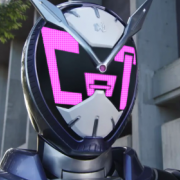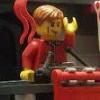Search the Community
Showing results for tags 'alchemy'.
-
Alright everybody, stick on your conspiracy caps, because today we'll be over-analyzing a children's book! (More so than usual, I mean.) Now, in the novelization of Mask of Light, the Energized Protodermis pool in Makuta's lair is actually described as "mercury". Some may write that off as a creative liberty, but is it really just incorrect phrasing from a source of questionable canonicity? Almost certainly, but for the sake of argument, let's say it's not. We all know what Mercury is, right? Silver metal stuff that's liquid at room temperature, right? And what does energized protodermis look like? Of course, your next line is probably "So what? The author probably just used the word mercury since the two look so similar." Sure, but what if I told you that mercury and energized protodermis don't just look like the same thing...they ARE the same thing! Hold on there a second Mr. Judgy McNotCrazyPants! I think we all know actual mercury isn't the same thing as energized protodermis; for one thing, mercury doesn't have the ability to break things down like energized protodermis does, and it certainly isn't involved in mutation of any kind. Except for when it IS. Let me introduce you to a good friend I like to call "alchemy", which is formally defined as "the medieval forerunner of chemistry, based on the supposed transformation of matter" and informally defined as "old people pulling stuff out of their butts so they could make dat sweet sweet bling". Mercury is incredibly important in alchemy, and while I won't go into all the specifics for the sake of brevity, let me go over the ones important to this theory. Regular old mercury in alchemy does a lot, and is considered a very fundamental part of the field, but it doesn't have a lot to do with breaking things down and/or transforming them. However, there is a unique type of mercury in alchemy called "Philosophical Mercury", which, as you can probably guess from the name, is an important part of creating the infamous Philosopher's Stone. We won't be talking about the stone itself here, but rather, what exactly Philosophical Mercury has to do with it. In alchemy, Philosophical Mercury is essential to the process of transmutation, breaking objects down so they can be reconstituted into better materials. Energized protodermis either breaks down or mutates whatever falls into it. They two substances seem similar in function, sure, but not exactly the same if you're looking at them on the surface level. On the other hand, we're over-analyzing stuff right now, so let's go deeper. You can't "mutate" metal. Inhabitants of the MU are mostly made of metal. In spite of this, those that get mutated by energized protodermis end up with the inorganic parts "mutated" along with their organic ones. Doesn't make a whole lot of sense, right? Well, what if their inorganic bodies weren't being mutated, but rather, transmuted by the alchemical effects of the Philosphical Mercury? This would explain why energized protodermis affected their inorganic bodies alongside their organic parts. As for energized protodermis's dissolving effect on those not destined to transform, you could argue that the transmutation process is stopped halfway through a la Scar from Fullmetal Alchemist; without being reconstituted, the material comprising their bodies is simply broken down, seeming to "dissolve" away. Or it could just be that I'm digging way too deep into an off-hand descriptor from a children's book. Yeah, that's probably it.
-
I got bored and built this cute little cottage for Fizzle and his apprentice. Upstairs:http://www.brickshelf.com/gallery/zekk55/Wizardscottage/us1.jpghttp://www.brickshelf.com/gallery/zekk55/Wizardscottage/us2.jpgDownstairs;http://www.brickshelf.com/gallery/zekk55/Wizardscottage/ds1.jpghttp://www.brickshelf.com/gallery/zekk55/Wizardscottage/ds2.jpg



